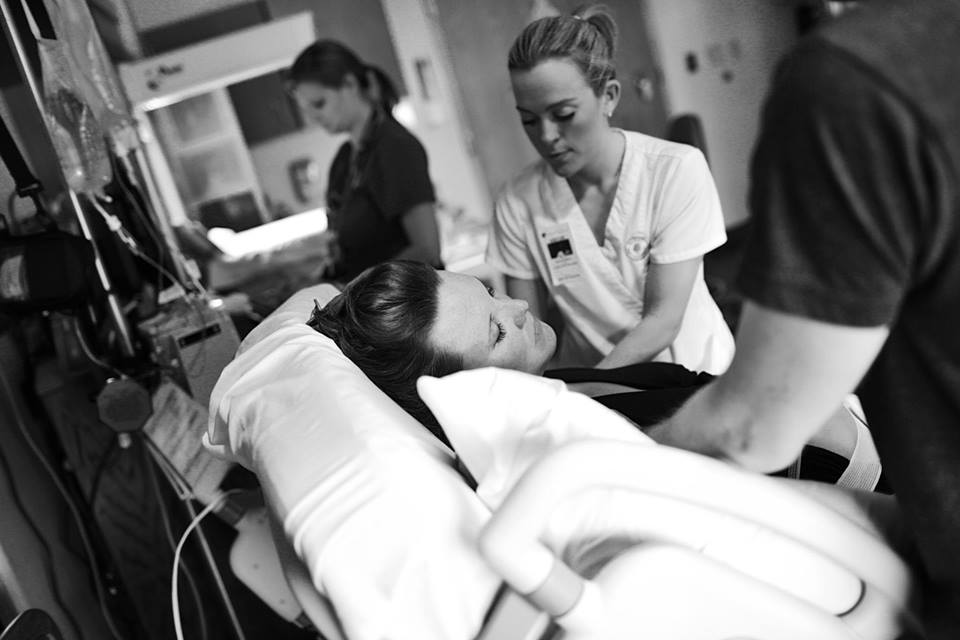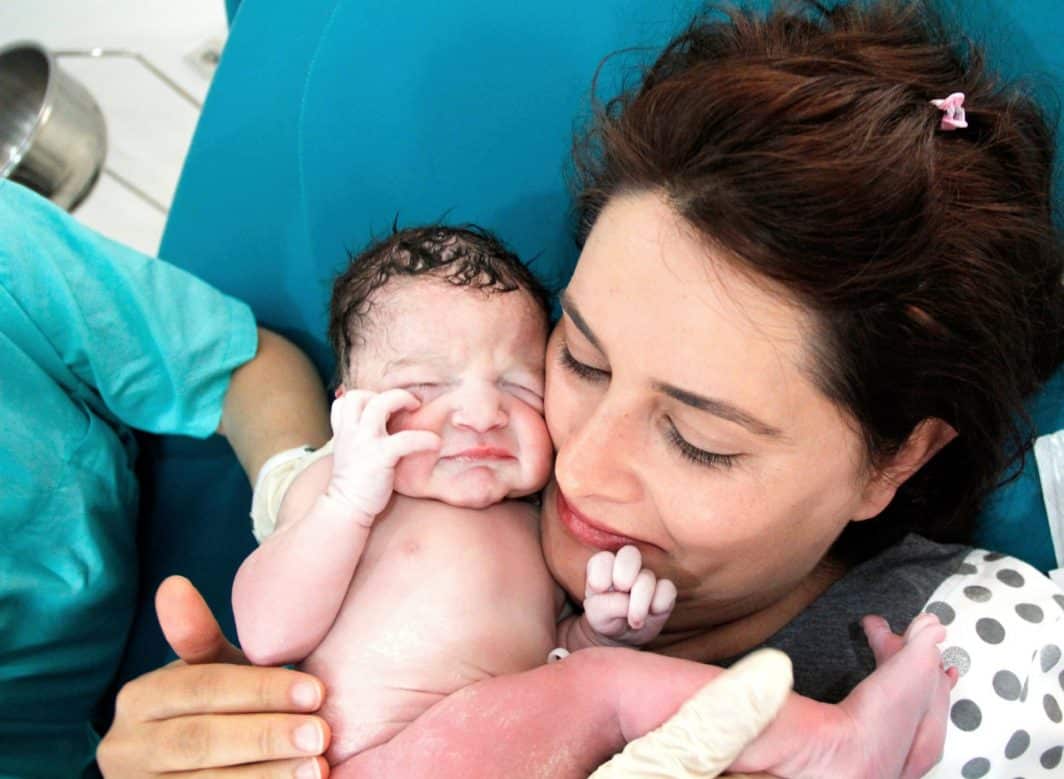Every month I get a call from at least one or two families telling me they want a VBAC (vaginal birth after a cesarean). They share their previous birth story with me, how and why it ended up in a c-section, and that they really want to have a VBAC but aren’t sure what to do to improve their chances. They ask if there are any secrets or tips I can give them to help, and you know what… You can do things that are in your control to increase your chances of having the VBAC you want.
Many people may think it’s all about your and your baby’s health to have a successful VBAC. While health is important, many other factors can determine your delivery outcome. For example, who you choose as your care provider, where you choose to give birth, what tests and procedures you have during your pregnancy and labor, and many more. All of these choices make a difference. By being an active participant and making informed decisions, you lower your chances of having a repeat cesarean.
I have to say that I am not shaming c-section births. There is absolutely nothing wrong with having a c-section (they are needed and, at times, necessary). However, some people look at the benefits of having a vaginal birth after a c-section and want to try having a VBAC. Because of those people, I want to help! If you are one of those people, this article is for you. Here are some important issues to consider to help you have a successful VBAC.
Disclaimer: There is no way to 100% guarantee a VBAC because, unfortunately, there are no guarantees for labor and childbirth.
Tips to Help You Have a Successful VBAC
1. Choose a Supportive Care Provider

The number one thing you can do to improve your chances when planning for a VBAC is choosing a care provider that fully supports and believes in VBACs. When interviewing different care providers, an OB might say that they support VBACs, but it could be a different story on your big day. This is why you need to choose someone with a history of successful VBACs and someone prepared to do everything they can to make your VBAC a success. (Be sure to ask what their cesarean percentages are and their VBAC percentages, and be willing to change providers if you don’t have confidence in them.)1
There is another option available that many women in the United States don’t consider… midwives. Evidence proves that for healthy, low-risk pregnant women, care provided by professional midwives reduces the risk of cesarean sections compared to care provided by physicians.2 So I highly recommend that if you are low-risk (your only high-risk condition being a VBAC), you should consider meeting with a midwife or two to ask some questions. Your chances for a VBAC will be much higher choosing a midwife, and you will be surprised to discover how much experience and training they have, especially in helping women who want to have VBACs. So I encourage you to research and find access to midwifery care and accredited birth centers in your community that accepts VBAC clients.
2. Choose a Supportive Place to Give Birth


Something important to know is that there are hospitals and birth centers out there that do not accept VBAC patients and will not allow women to attempt/have a VBAC. This surprises some people that their care provider may approve, but the birth location may not. This is why you need to ensure that your care provider has privileges at a location that allows VBACs and will support you during your labor.
3. Ask Questions
You should ask your care provider, “how long will you allow me to go past my due date?” It would help if you asked this question because since you previously had a cesarean section, scheduling an induction (more than likely) is not an option for you. If you do not go into labor spontaneously around your due date, your leading choice is to schedule a c-section. 🙁 This is why you want to ask, so you know how much time you have before they are ready to schedule you for a c-section.
If you are wondering why inductions usually are off the table for VBAC mamas, the reason is the drug that they use to induce women (Pitocin) increases your chances for uterine rupture. Uterine rupture is a serious matter that every care provider takes extremely seriously. For more information on potential gentle inductions for VBACs, read this.
4. Join A Mother’s Support Group

Whether that’s an ICAN group in your area or even a Facebook group/online support group, finding other women to talk to about what you are going through and hearing their success stories of how they have been able to do it can really help.
5. Do Your Research
If a VBAC is what you want, you need to be aware of the facts behind it and do your research. This includes reviewing studies and articles on the internet, listening to podcasts about VBACs, watching videos (DVDs and YouTube clips), and joining/visiting online groups. In-person support groups (a point made above), reading books, talking to medical professionals, as well as meeting with other hopeful VBAC mamas (to know what steps they are taking) and successful VBAC moms (to understand what they did).
Books that I recommend reading:
- The Thinking Woman’s Guide To A Better Birth by Henci Goer
- Ina May’s Guide to Childbirth by Ina May Gaskin
- Spiritual Midwifery by Ina May Gaskin
- Silent Knife: Cesarean Prevention and Vaginal Birth After Cesarean by Nancy Cohen
- The Birth Partner by Penny Simkin
Another article to read:
A podcast episode to listen to:
All in all, the more you understand and know about VBACs, the better prepared you will be. Just remember that you can do this! 60 – 80% of women who attempt VBACs are successful, and the American Congress of Obstetrics and Gynecology (ACOG) supports attempting a VBAC.3,4
If you’re nervous about being your own advocate during labor, my next point will help tremendously…
6. Hire a Doula

If you’re in the hospital, it can be challenging to speak your mind when going through contractions and trying to rest in between each. However, the hospital staff can and do (sometimes) make medical decisions for you, even when they may not be necessary. (And yes, I have seen this happen.) This is why a doula can be vital to a successful VBAC.
Most partners do not know what to expect during labor and delivery and won’t know how to advocate for you if things go wrong. A doula does just that; she is trained to help you labor, make informed decisions, and advocate for you if necessary. Also, women who give birth with a doula are significantly less likely to have a c-section and have more satisfying birth experiences.5 The knowledge and support a doula offers could be the difference between a successful VBAC and a repeat c-section.
A doula might not be necessary if you’ve chosen a midwife as your care provider, but she can still be extremely helpful. (The more people around you who have experience helping women have VBACs, the better.) Start interviewing some doulas in your area. They book up quickly!
7. Go to a Childbirth Class Outside the Hospital
Taking a childbirth class (whether a one-day course or a 12-week course) is a great option! I recommend taking your class outside of the hospital to ensure the educators aren’t withholding any information from the class. Outside the hospital, those educators can also give you valuable information about what to expect from each hospital or birth center. Unfortunately, in-hospital classes, doctors can tell the educators that they cannot talk about specific topics or cover certain options since they don’t want their patients to know things they don’t feel comfortable with. It shouldn’t be about what’s easiest and most convenient for the doctor; it should be what’s best for the laboring woman.
8. Stay Healthy

This is obvious for any pregnancy. Continue to eat right and stay active because the healthier you are, the higher your chances of having the VBAC you want.
9. Speak Up
You must communicate with your care provider and support person(s) about your desired experience. Start these conversations from the very beginning so that everyone is on the same page. The more that you make your desires known, the better. It’s also a great idea to write a birth plan. Your doula can help you with this if you have questions. Your birth plan will give your entire birthing team (doctor, nurses, etc.) a better understanding of your goals when you get admitted into L&D.
10. Avoid Screening for a Big Baby
Once you start approaching your due date, your doctor may recommend measuring the size of your baby. Based on the measurements, your care provider then determines whether or not your baby is “too big” to be born vaginally. However, I want you to know that these measurements are usually inaccurate since this isn’t the most reliable way to determine the baby’s weight and size.6
I always tell my clients that an ultrasound screening has an error margin of 10% to 20%.7 Sometimes it’s accurate, but a lot of times, it’s not. Some women have been told they will have a big baby, and their baby came out weighing only 7 pounds. I’ve also seen very petite women deliver 10+ pound babies vaginally with no issues. So when people say your baby is too big to be born vaginally, I think of those women. It’s not true! So avoid having this screening done because they may just want to convince you that your baby is “too big” and want you to schedule a c-section when you may be able to have the VBAC you want.
11. Give Yourself Grace
As I stated at the beginning of this post, nothing is guaranteed when it comes to labor and birth. And after all of the preparation and research you’ve done, even if it doesn’t happen exactly the way you wanted, don’t beat yourself up. It’s okay. Even if you have another c-section, that’s okay too. Whatever happens, you did all you could, and at the end of the day, you just brought your new daughter or son into the world. You carried, labored, and birthed life. That is a miracle. Always give yourself grace, mama, because you are amazing.




















